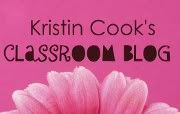
BLOG HOP HOSTS: Head on over to Jennifer's blog: First Grade Blue Skies and Laura's blog: Tattling to the Teacher for the chapter 4 study!


Now we are getting into the nitty-gritty of the Daily 5. YES! (Fist pump as needed.)
Chapter 4 is all about building the foundation of the D5 by establishing expectations and setting routines by developing muscle memory through a "slow and steady" approach.
As Gail and Joan state on pg. 46, "Having children read to themselves is the first step in Daily Five and is the foundation for creating independent readers and writers."
Let's get to it!
READ TO SELF!
3 Ways:- Read and talk about the pictures
- Read the words
- Retell a previously read book
- Day 1
- Session 1: read the pictures
- Session 2: read the words
- Day 2: retell
- Day 3: practice for 3 min.
- Day 4: practice for 4 min.
- Day 5 and beyond: continue to increase stamina and practice as needed
Many of us teachers have modeled, reflected, and had students practice expectations for hallway, bathroom, water fountain, etc. However, after reading this chapter, I noticed that I rarely make a chart with our class's reflections! I said to myself "Duh! That makes so much sense!"
I also like how they refer to this chart during both appropriate and inappropriate modeling of behavior.
The other aspect of the I-Chart that makes it so special for a classroom community is to have the teacher expectations on the opposite side of the student's expectations. This helps students realize that the teacher will also be responsible for doing tasks and that s/he will be busy during this time. Also, it creates ownership with both the students' and teacher and solidifies in the students' mind that the teacher is a contributing member in "my" classroom.
It's the same principle as putting your name on the birthday chart! I remember this past year my husband said to me, "You put your name on the birthday chart? What for? So you can get more teacher gifts?" Of course he was joking and that is NOT the reason why I put my name on the chart; it is to show students that you are a "person" too. Plus the students LOVE it when it is your birthday! Maybe because of the b-day treats I bring in. . .
Anyway . . .
The D5 is very routine oriented from the introduction of good-fit books to the introduction of each part of the D5. Therefore the students can predict the teacher's behaviors each day and expect consistent presentation and routines across each D5 element. This in turn allows the students' brains to focus upon the actual learning of the D5 element and the desired behaviors for that element rather than having to guess what's going to happen tomorrow. This de-stresses the learning environment to allow for cognitive thinking.
Next up. . . Chapter 5: Read to Someone and Listen to Reading!
Thank you for reading this post!







































0 comments:
Post a Comment